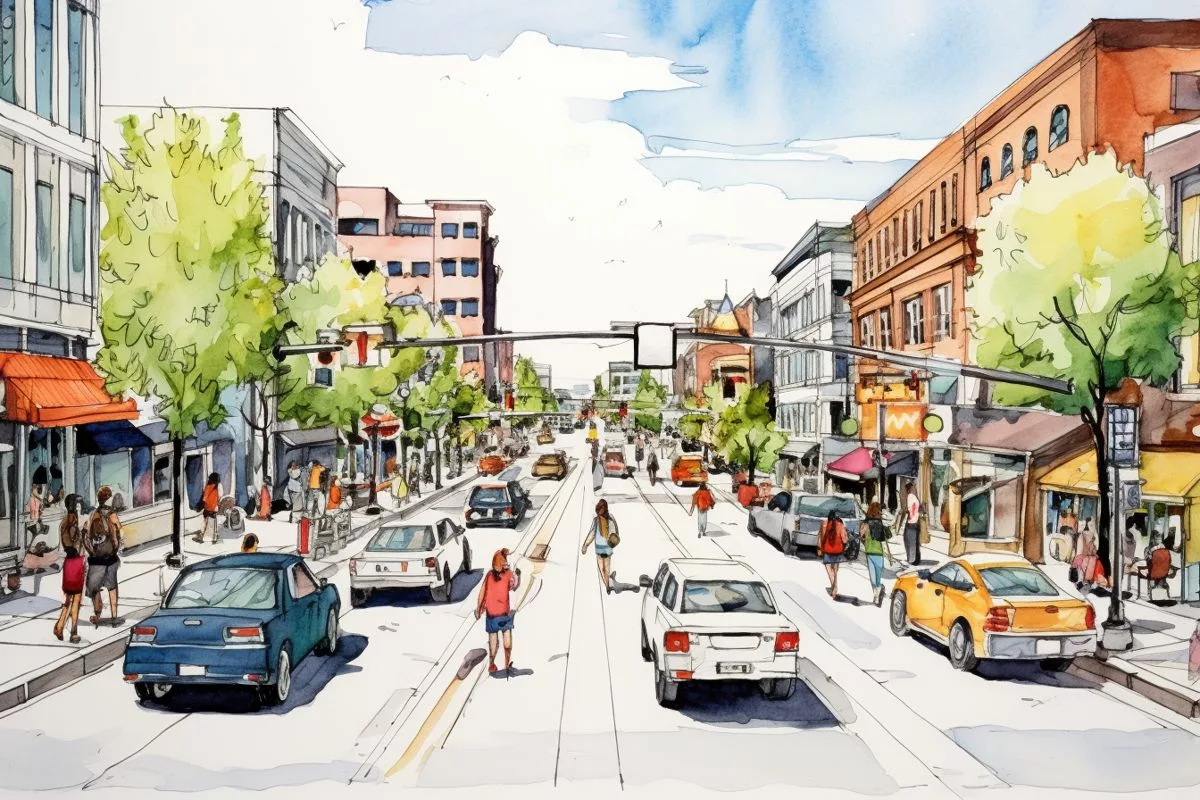Cape Town’s Urban Mobility Directorate is seeking public feedback on proposed traffic calming measures for 14 communities, including school zones, to protect vulnerable road users. Residents can view the proposed designs and provide feedback through various channels until December 2, 2023. The City is dedicated to addressing each site and highlights the critical role of public participation in the decision-making process. Various channels are available for submitting feedback, including in-person at various Subcouncil offices and libraries throughout affected communities, ensuring all voices are heard.
What traffic safety initiatives is Cape Town seeking public input on?
Cape Town’s Urban Mobility Directorate is seeking public feedback on proposed traffic calming measures for 14 communities, including Claremont, Heideveld, Surrey Estate, Plumstead, Bergvliet, Crawford, Retreat, Rondebosch, Hazendal, Grassy Park, Wynberg, Gugulethu, Nyanga, and Mowbray. The proposed measures aim to protect vulnerable road users, particularly in areas with high pedestrian concentrations like school zones. Residents can view the proposed designs and provide feedback through various channels until December 2, 2023.
Cape Town’s Urban Mobility Directorate Encourages Community Involvement
The bustling city of Cape Town is taking further steps to ensure the safety of its residents. Cape Town’s Urban Mobility Directorate is inviting public feedback on proposed traffic calming measures for 14 communities, including Claremont, Heideveld, Surrey Estate, Plumstead, Bergvliet, Crawford, Retreat, Rondebosch, Hazendal, Grassy Park, Wynberg, Gugulethu, Nyanga, and Mowbray. The feedback window is open until December 2, 2023, giving ample time for residents to review the plans and provide their valuable opinions.
Councillor Rob Quintas, Mayoral Committee Member for Urban Mobility, emphasized the significance of community involvement in enhancing pedestrian safety. The proposed measures are designed to protect vulnerable road users, particularly in areas with high pedestrian concentrations like school zones. Councillor Quintas encourages residents to visit the City’s website to examine the plans and reach out with any questions or comments they might have.
While the City plans to carry out traffic calming measures at all suggested locations, funding availability may impact the project’s final scope. Given the uncertainty surrounding cost-related factors, the City’s dedication to addressing each site highlights the critical role of public participation in the decision-making process.
Accessing Proposed Plans and Providing Feedback
Residents and affected parties can view the proposed designs and find the list of impacted streets and roads by visiting www.capetown.gov.za/haveyoursay. The City has also provided multiple channels for submitting feedback for those who prefer other forms of engagement:
- Email: UrbanMobility.CT@capetown.gov.za
- Online: www.capetown.gov.za/haveyoursay
- Written submission: Public Participation Unit, 3rd floor Podium Block, Civic Centre, 12 Hertzog Boulevard, Cape Town 8001
- In person at various Subcouncil offices and libraries throughout the affected communities
Understanding that not all residents have equal access to digital resources or the same ability for written communication, the City has made special provisions for individuals who cannot read or write, those with disabilities, and other disadvantaged groups. The City will offer assistance in recording and submitting inputs or comments to the municipality, ensuring all voices are heard.
For additional information or to request special assistance, residents can contact Anthea Bendie at 021 400 1450 or Anthea.Bendie@capetown.gov.za.
Shaping the Future of Traffic Safety in Cape Town
The Urban Mobility Directorate’s invitation for public input reflects the City’s commitment to promoting a transparent and inclusive process that values the insights and concerns of its residents. As the proposed traffic calming measures begin to take form, residents have a unique opportunity to contribute to the safety and accessibility of their communities. By participating in this process, Cape Town’s citizens can collaborate with the City to create safer streets for everyone.
How long is the feedback window for the proposed traffic calming measures in Cape Town?
The feedback window is open until December 2, 2023.
Which communities in Cape Town are included in the proposed traffic calming measures?
The proposed traffic calming measures are for 14 communities, including Claremont, Heideveld, Surrey Estate, Plumstead, Bergvliet, Crawford, Retreat, Rondebosch, Hazendal, Grassy Park, Wynberg, Gugulethu, Nyanga, and Mowbray.
Who can provide feedback on the proposed traffic calming measures?
Residents and affected parties can provide feedback on the proposed traffic calming measures.
What is the goal of the proposed traffic calming measures?
The proposed traffic calming measures aim to protect vulnerable road users, particularly in areas with high pedestrian concentrations like school zones.
What channels are available for submitting feedback on the proposed traffic calming measures?
Residents can provide feedback through various channels, including email, online, written submission, and in person at various Subcouncil offices and libraries throughout affected communities.
What if residents cannot access or communicate through digital or written channels?
The City has made special provisions for individuals who cannot read or write, those with disabilities, and other disadvantaged groups. The City will offer assistance in recording and submitting inputs or comments to the municipality, ensuring all voices are heard.
Who can residents contact for additional information or special assistance?
Residents can contact Anthea Bendie at 021 400 1450 or Anthea.Bendie@capetown.gov.za for additional information or to request special assistance.
How important is public participation in the decision-making process for traffic safety initiatives in Cape Town?
The City’s dedication to addressing each site and highlighting the critical role of public participation in the decision-making process underscores the significance of community involvement in enhancing pedestrian safety.








